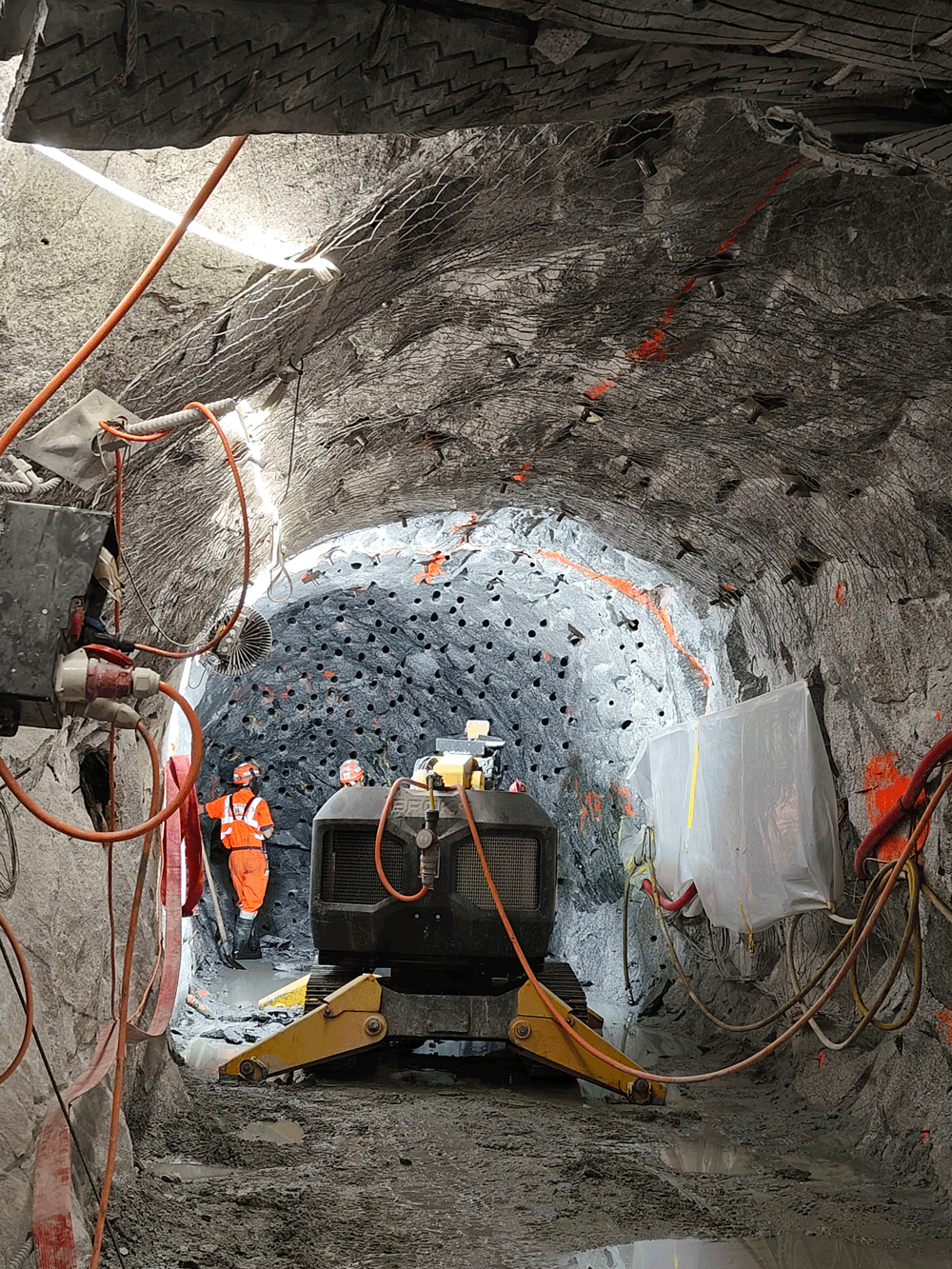Understanding earthquake physics
Earthquakes are one of the most significant hazards for human society, and, at the same time, remain the most elusive. Improving the ability to forecast earthquakes is one of the main challenges remaining for the natural sciences. With the European Research Council (ERC) Synergy project “Fault Activation and Earthquake Rupture” (FEAR), a consortium of scientists from the Eidgenössiche Technische Hochschule Zürich (ETH Zurich) in Switzerland, the Rheinisch-Westfälische Hochschule (RWTH Aachen University) in Germany, and the Instituto Nazionale di Geofisica e Vulcanologia (INGV) in Italy are conducting a suite of ambitious experiments in the world-unique Bedretto Underground Laboratory for Geosciences and Geoenergy (BedrettoLab), an underground experimental facility in the Bedretto Tunnel, located at 1000m depth under the Swiss Alps.
The core idea of FEAR is to gain understanding on how earthquakes start and stop by using hydraulic stimulation to modify stress and initiate small non-damaging earthquakes (magnitude ~1.0 events on fault patches of 10-50m scale) on candidate faults in the vicinity of the Bedretto Tunnel. A dense network of multidisciplinary sensors will capture the rupture preparation phase, the earthquake rupture, and the post-rupture response of the rock mass. These experiments will give unprecedented up-close near-field insight into the physics of earthquake processes, contribute to pushing forward the current limits on earthquake predictability and advance the state-of-the-art in safe use of geoenergy.
Observing earthquakes where they occur

To study how earthquakes initiate, propagate and stop, a new side tunnel has been built at the BedrettoLab at ETH Zurich. It serves as an observation centre for a fault and is equipped with numerous sensors and instruments, a facility that is unique in the world.
ETH Zurich has constructed a 120-meter-long side tunnel at the BedrettoLab, an underground research facility in Ticino (Switzerland). This new tunnel runs parallel to a carefully selected natural fault zone. Thanks to this specific location, researchers can study in detail how an earthquake starts at one point along a fault and then propagates until it runs out of energy. Using specialized equipment, an European research consortium is studying how faults move to better understand – and potentially predict – earthquakes. The project behind this initiative, called Fault Activation and Earthquake Rupture (FEAR), was funded by the European Research Council with €14 million. It aims to answer two of the most fundamental and unresolved questions in seismology: What happens just before an earthquake begins, and what causes it to stop. Researchers hope that answering these questions will help push the boundaries of earthquake predictability.
A unique on-fault observatory
To study earthquakes right at their source, the FEAR team drilled numerous boreholes. Most of them to monitor processes in the rock. Others to inject water and induce small earthquakes. They are equipped with a wide range of sensors and together form a novel on-fault monitoring network. The sensors are sensitive enough to detect earthquakes as small as magnitude -5 and will also measure other parameters such as fluid pressure in fractures, stress changes, and more. During the large-scale stimulation experiments the team is now preparing, hundreds of cubic meters of water are injected into the fault zone at high pressure. Fluid overpressure reduces the existing stress on fault planes, weakening them and making it easier for them to slip. This reduction in friction can trigger fault movement, resulting in induced earthquakes.
“An on-fault observatory is the missing piece of the puzzle in studying earthquakes”, says Prof. Domenico Giardini, one of the four principal investigators of the FEAR project. “We have excellent monitoring networks around the world. However, most are placed on the surface and are therefore located several kilometers away from the earthquake's point of origin. And even the few sensors placed in boreholes are usually only near fault zones, not directly within them.”
Triggering a magnitude 1 earthquake
In their upcoming experiments, the research team intends to induce a magnitude 1 earthquake. That is typically well below the threshold of human perception, which is around magnitude 2.5 at the surface. However, within meters of a fault, the resulting ground motions can be strong. The FEAR researchers build on extensive experience from the past 4 years, having conducted numerous injection experiments in the BedrettoLab, with increasing levels of injection pressure, and so far triggering earthquakes up to a magnitude of -0.5. The dense network of sensors, placed both on and around the target fault zone, will help the researchers understand what happens before, during, and after such an event. The researchers will also look for diagnostic precursory signals, which may not be detectable with less sensitive monitoring setups, and which could one day help predict large earthquakes.
Final construction phase of the new side tunnel has begun

The final construction phase of the new side tunnel has recently started. About 60 meters still need to be built using drill-and-blast excavation to complete the 120-meter-long tunnel. The side tunnel is expected to be completed in the fall.
Find out more about our experiments here
FEAR annual meeting in Airolo

The annual meeting of the FEAR project took place from 13 to 15 May in Airolo and team members from Rome, Aachen and partners from Berkeley met. Participants reviewed the findings from several experiments already conducted, which provided a substantial basis for discussion. A key focus of the meeting was the upcoming completion of the new side tunnel and the associated experimental testbed where the FEAR main experiments will take place in approximately 6 months. As this marks a critical phase of the project, planning and coordination efforts were intensified.
